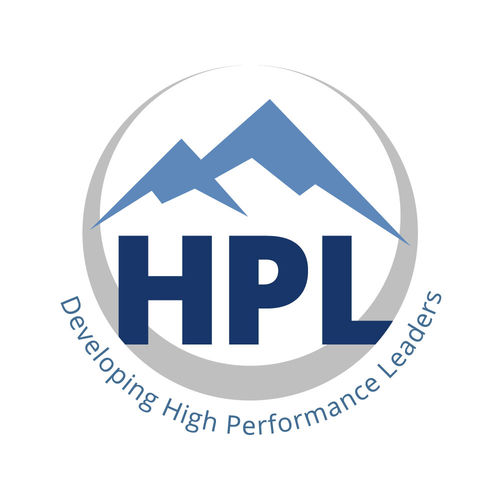
|
|
||
|
In this second article in the Leading Problem Solving in Non-Manufacturing Series, we'll discuss the application of TIM WOODS in non-manufacturing areas.
No matter what our team does or is responsible for, we all have an ultimate customer. They may not be the traditional customer but rather other internal departments or company stakeholders. So whether in manufacturing or non-manufacturing, it's important to first consider how our customer defines value. At HPL, we believe all customers, internal or external, value the following when it comes to the product or service they are expecting of us:
Therefore anything that detracts from these 4 values or attributes can be looked upon as a waste and is certainly undesirable. As leaders then, our role is to engage our teams in identifying and waging war against anything that negatively impacts our abilities to meet and exceed our customer expectations. This then is a starting point for a form of problem solving for all leaders and their teams. In order to identify these wastes or problems, we need to "teach our eyes to see" the various forms of waste. That's where the acronym TIM WOODS comes into play, whether in manufacturing or non-manufacturing.
Let's address a myth that TIM WOODS is not applicable to non-manufacturing by taking a look at just a few examples of the 8 forms of waste in non-manufacturing environments.
Transportation - excessive movement of people, information, or materials. In non-manufacturing areas there are typically huge opportunities to reduce "transportation" wastes. Examples could be associated with numerous or multi-level approvals requiring multiple emails to different people, multiple in-person reviews/presentations obtaining multi-level or departmental approvals, and transferring files, data, reports between people or departments. Walking to conference rooms or from building to building to attend meetings.
Inventory - excessive storage and delay of information or products. It's important here to consider inventory as more than just raw materials or finished goods, and think about excessive storage of information of physical or electronic in nature. Examples of inventory of this nature could be excessive filing cabinets with years of no longer necessary documents, inbox with hundreds or thousands of unread/unresponded emails (yes you!), having to maintain multiple copies or versions of electronic documents in multiple locations, or issuing the same data in various formats.
Motion - any motion that does not add value to the product or process. Many of the examples of waste described above, also result in creating unnecessary or unproductive motion, such as walking around the office to find necessary information, obtaining clarification for tasks, locating shared tools or equipment are some common examples. It could also be motion from poorly laid out office spaces or even having to make too many 'clicks' on a webpage to get the necessary information for the task at hand or multi-level file directories to open a file.
Waiting - long periods of inactivity for people, information, machinery, or materials. This form of waste is definitely applicable to non-manufacturing and is commonly experienced in "waiting" for approvals, responses, or information from others. What should be a quick approval can often take days if not weeks to receive. This waiting could be a result of a poor process, lower priority to the requesting person, missing necessary information, poor organizational skills, people on vacation or out of the office etc. Waiting slows things down, decreases efficiency, and increases the opportunity for errors and omissions.
Over Production - producing more/sooner than the internal or external customer needs. Over production in non-manufacturing includes things such as creating reports that are not used, the tracking and collection of data that is no longer analyzed or used for any purpose, printing more documents than are distributed at a meeting, or lengthy emails or presentations that provide unnecessary information and don't really add value.
Over Processing - using the wrong set of tools, procedures or systems. Similar to 'waiting', over processing is all too common in non-manufacturing. Over processing shows up in the form of large distribution lists which include many unnecessary people, unnecessarily being added to the 'cc' line of an email, abuse of the 'reply all' feature, or unnecessary or lengthy meetings. Also having team members with high or advanced skills doing routine work or tasks is also over processing.
Defects - frequent errors in paperwork or product quality problems. Often passed off as normal "human error" in non-manufacturing, there are many defects created. These can include data entry errors within systems when manually entered, software coding errors, missing information, none functional links, missing attachments, incorrect tolerences or dimensional errors within designes.
Skill - lack of training, application, development, engagement. Beyond the necessary skills required to perform any type of task, areas can also include on-boarding of new hires as they learn their way around and adapt to the new culture, new skills required with the introduction of new IT systems or tools, new automation, routine software updates with a change to features, or as simple but frustrating as a new photocopier or printer.
These examples indicate that TIM WOODS clearly applies to non-manufacturing environments just as much as it does in manufacturing. These wastes not only decrease efficiencies but many of these are what frustrate our teams.
Unfortunately, too often in non-manufacturing areas, the perception when beginning to track the above type of issues, people may take it negatively and look at it as personal criticism of their work or competence. This should and can be overcome easily and quickly. First start by explaining the why and "WIFM" (the 'what's in it for me?') to the team and that tracking of this information will be used to prioritize ares the team can focus on for improvement and will not be used for performance management. The why and WIFM can include the following:
Why:
WIFM:
Next is to get some quick wins, ideally on things that cause them the biggest frustrations or create undesirable work or tasks. Lead the team to identify the top 1-3 priorities and then implement problem solving methodologies to breakdown the problems, identify root cause, and implement countermeasures. Select priorities that the team can directly control so that a quick win can be realized. Doesn't have to be easy necessarily, but it should be an area within your or the teams' direct responsibility to make change. This is to avoid delays or problems obtaining approvals or agreement from other leaders/department if it is not a priority to them.
As the leader, you need to let the team come up with the countermeasures and to implement them. Your job is to coach them along the way on problem solving, remove barriers experienced along the way, and provide necessary resources. You also should provide a framework in which they can problem solve. For example time frame for implementation, budget, tools, resources, etc, to help avoid the team coming back with a proposed solution that you will not be able to support. Of course, you also have to provide encouragement along the way, and recognition and celebration for achievements, including when counter measures don't work as expected.
It may take some time, but following these steps is proven to build engagement, improve problem solving skills and capabilities, and increase job satisfaction. The momentum builds and once moving, there will be no stopping it!
In the next article in this series, we'll discuss how you can put TIM WOODS to practice in a non-manufacturing area by 'teaching your eyes to see'.
If you missed the first article in the series, 'Leading Problem Solving in Non-Manufacturing Space - 1 Second Understanding", you can read it here. |
||
|
||
|
||
|
||
|

|
|
HPL Administrator 7 November 29, 2024 |

|
|
Sabrina Sommerville 1 August 15, 2024 |

|
|
Glenn Sommerville 45 June 6, 2024 |